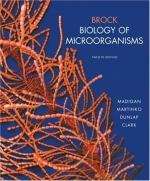|
This section contains 1,218 words (approx. 5 pages at 300 words per page) |

|
From the moment of birth and throughout our entire lives, humans share their bodies with a surprising variety of microscopic organisms. Dust mites remove dead skin, amoeba live on their teeth and scavenge food particles, and eyebrow mites live on their eyebrows.
Scientists estimate that the human body has around 7.5 1013 cells. Many of these cells are not of human origin, but represent microscopic commensal and mutual organisms. In commensal interactions, one species of organism benefits and the other is unaffected. In mutual interactions, both organisms benefit.
The term "commensal" is derived from a Latin word mensa, meaning "table." Commensal organisms share their food from a common table. In the case of human commensals, the human host is the table. It is often difficult to identify a relationship between organisms as purely commensal, mutual, or parasitic, as the way in which...
|
This section contains 1,218 words (approx. 5 pages at 300 words per page) |

|


